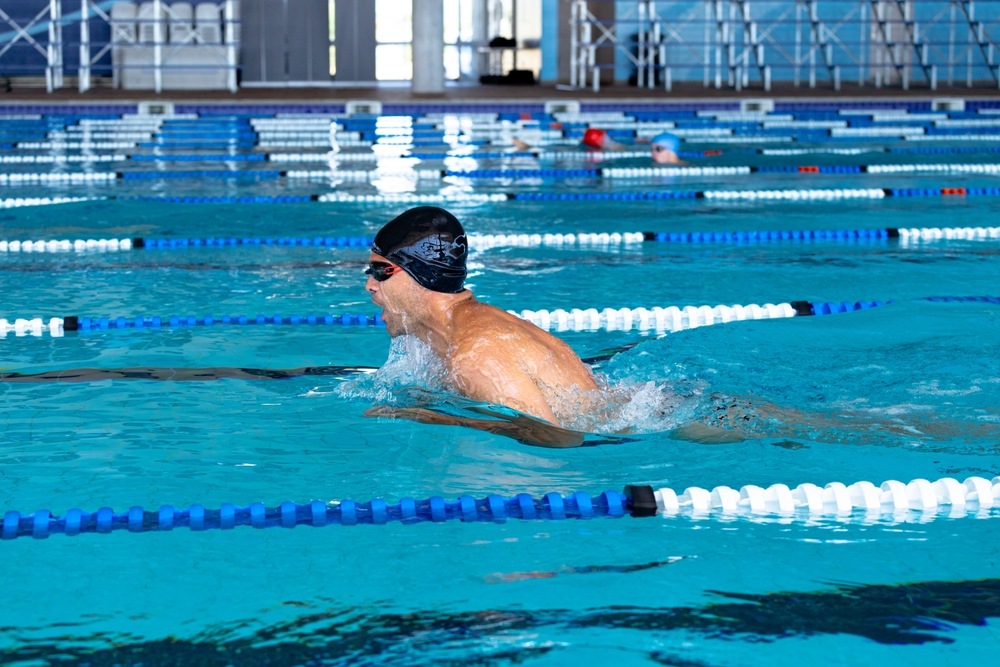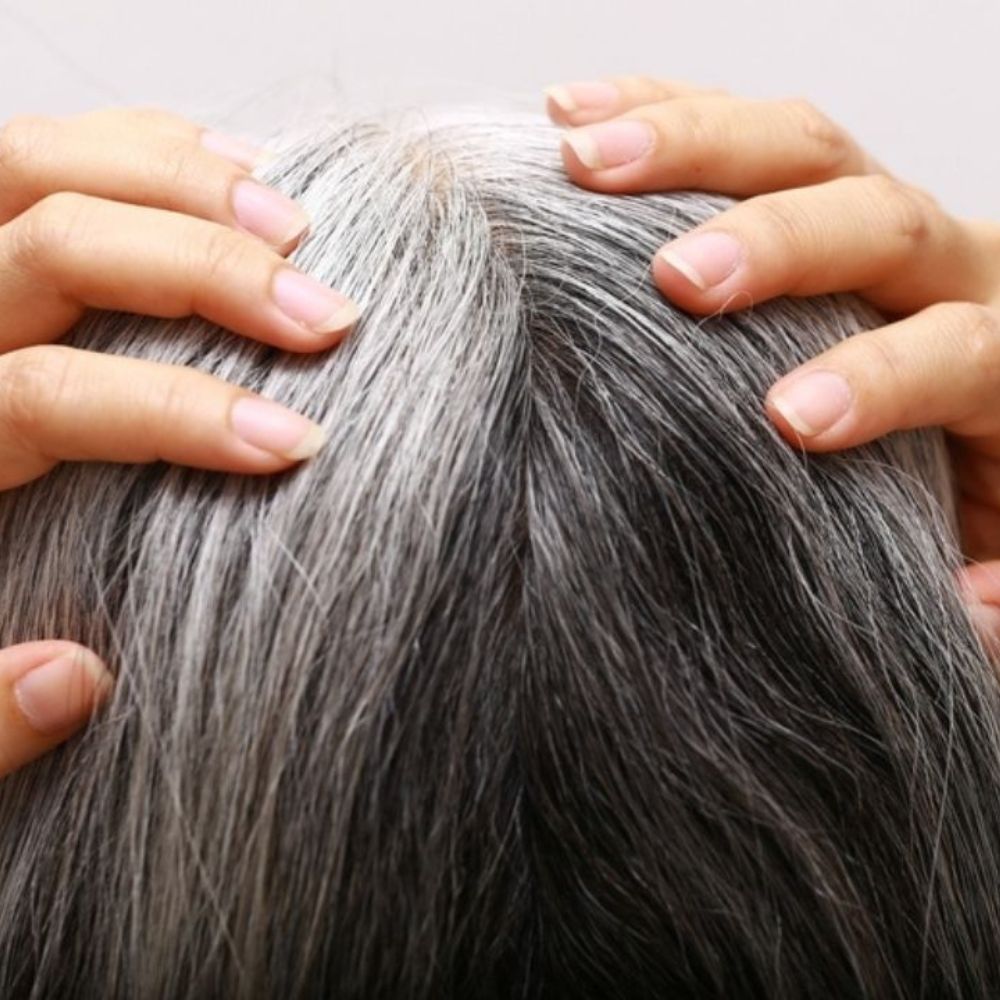How to Protect Your Hair from Chlorine Damage? Secrets to After Pool Haircare
Check out scientifically researched facts and solutions for the age-old questions - how to protect your hair from chlorine after a fun day out in the poolside.

As a swimming enthusiast, one always wonders how to protect hair from chlorine and get “good-hair days” back. Long-term exposure to harmful chemicals like chlorine can dry out and damage the hair shaft. Therefore, we are here to rescue your beloved tresses and give them the shine, health, and beauty back. Here, we will discuss some well-researched tips and tricks that will prevent and combat the harm caused by chlorinated pool water.
Chlorine is a helpful chemical that has made life better for many people worldwide. It's not only used to disinfect various stagnant water reservoirs like swimming pools but also used in manufacturing various essential products extensively used in fields such as health, technology, food, safety, and transportation. But just like every chemical, chlorine too has its harmful effects, which we are going to discover with respect to hair health. Hence, it’s important to follow a proper hair care routine, such as using chlorine removal shampoos, using deep conditioners, wearing a swimming cap, etc. to improve hair texture and prevent damage. Keep reading to know more!
What Is Chlorine?

Chlorine, chemically symbolized as Cl, is typically obtained from ordinary salt or sodium chloride (NaCl) (1). The production process of chlorine is very energy efficient as it releases two by-products that have other uses in manufacturing facilities. First is, hydrogen which is used as a driving energy source in many factories. The second is sodium hydroxide, which is used to manufacture many essential products.
Chlorine is added to the water of pools and spas for its disinfecting effects on pathogenic microorganisms. Chlorine added to the pool in the form of dichlor1 and trichlor2 keeps the water safe by killing waterborne disease-causing organisms that may cause severe illnesses such as diarrhea, ear infection (swimmer’s ear), skin allergies or rashes like athlete’s foot, and dandruff or scalp infections. Chlorine is also used in households as a bleaching agent to clean, whiten, and disinfect clothes, floors, and kitchen and bathroom surfaces. You may also encounter this chemical in various other market products, such as contact lenses, air conditioners, refrigerators, solar panels, bullet-resistant vests, energy-efficient windows, paint, and prosthetics.
Hair Damaging Effects of Chlorine

Regular exposure to chlorinated water can lead to chlorine hair, which is characterized by dryness and brittleness. To further answer your question - “What does chlorine do to your hair?”, here is a list of ill effects you may experience:
1. Dryness
Chlorine is an aggressive chemical that strips the natural oils, or sebum, from your hair and scalp. This leaves your hair feeling dry and lacking the essential oils that help maintain its moisture (2).
2. Brittleness
When chlorine depletes your hair's natural oils and moisture, it becomes more brittle. This brittleness can result in increased hair breakage and the formation of split ends(2).
3. Color Change
Chlorine can cause color-treated hair to fade more quickly, as it can break down the molecules in hair dye. Additionally, in some cases, especially in blonde or light-colored hair, chlorine exposure can lead to a greenish tint, which is often due to the interaction of chlorine with copper compounds in pool water (3).
4. Increased Porosity
Chlorine can increase the porosity of your hair, making it more porous and susceptible to absorbing water and pool chemicals. This can further exacerbate the damage and dryness caused by chlorine exposure.
5. Weakened Hair

Prolonged exposure to chlorine can weaken the protein structure of your hair, making it more fragile and less resilient.
6. Dullness
The natural shine of your hair is compromised by the removal of its protective oils, causing your hair to look dull and lifeless.
7. Tangles and Knots
Chlorine can disrupt the hair's cuticle, making it more prone to tangling and knotting, especially if you have long hair. This can lead to hair breakage during detangling.
8. Scalp Irritation
Chlorine can also irritate your scalp, causing dryness, itching, and sometimes even dandruff. This can be uncomfortable and lead to scalp issues if not properly addressed (4).
9. Weighed Down Hair
Chlorine can build up on your hair, making it feel heavy and weighed down. This buildup can reduce hair volume and make it look flat and lifeless.
10. Chemical Odor
Chlorine can leave an unpleasant chemical odor in your hair, which can be difficult to remove without proper care and cleansing.
Best Tips on How to Protect Hair from Chlorine

The chlorine water as we learned by now can be excessively damaging to the hair and skin. Therefore, we have curated a guide on some of the most important chlorine hair protection tips one must consider before diving into a pool.
1. Use a Chlorine-Removing Shampoo
Use a chlorine-removing or clarifying shampoo specifically designed to neutralize chlorine and remove copper buildup. These shampoos are effective in preventing your hair from turning green. You can use them periodically to maintain healthy hair.
2. Oil Your Hair Regularly
Chlorine exposure in pools can cause damage to hair and make it dry, and oiling can help restore moisture and protect your hair. You may choose your preferred hair oil, however, coconut, argan, castor or almond oils are usually very effective for the scalp.
3. Use a Deep Conditioner

After swimming, apply a deep conditioner to your hair to replenish moisture and repair any damage. Conditioning products that contain ingredients like shea butter, coconut oil, or argan oil should be added to your hair routine for hydrating your hair (5).
4. Avoid Tight Hairstyles
Our contributor Kristle Jones, a licensed cosmetologist, says, “Tight hairstyles, like sleep pony’s and swept-up buns are so on-trend but they can harm our hair in a couple ways. The first is the tension on that hair from pulling it so tight can create breakage throughout the hair. Overtime, you can also see some hair loss from tight hairstyles. Not to mention, tight hairstyles can cause painful headaches. Stick to this style occasionally rather than regularly.”
Avoid tight hairstyles like braids or ponytails when your hair is wet, as wet hair is more susceptible to breakage. Opt for looser styles or let your hair air dry.
“Tight hairstyles can harm hair by causing breakage, weakening the hair shaft, and leading to traction alopecia, a condition where prolonged tension pulls hair out at the roots. Additionally, they can cause scalp irritation and headaches due to the constant pulling,” continues Dr. Kaur.
5. Limit Sun Exposure
Prolonged sun exposure can also damage your hair. Consider wearing a wide-brimmed hat or a swim cap with UV protection if you plan to spend a lot of time in the sun.
6. Trim Your Hair Regularly

Regular trims can help remove any damaged ends and keep your hair looking healthy.
7. Maintain a Healthy Diet
Consume ample amounts of water and eat a balanced diet with essential vitamins such as A, C, and E, minerals like biotin, zinc, and omega-3 fatty acids, as they can contribute to the overall health of your hair (6).
8. Protect Color-treated Hair
If you have color-treated hair, it's even more important to protect it from chlorine and sun exposure. Consider using a swim-specific shampoo and conditioner for colored hair.
Ways to Prevent Hair from Turning Green After a Swim

Chlorine-damaged hair, especially the previously bleached or naturally blonde hair may change color to a greenish hue as it reacts with the heavy water metals which further get deposited in the hair (3). Therefore, to protect hair from chlorine and prevent such unwanted effects on your hair, you may exercise the following prevention methods:
1. Use a Swim Cap
Wearing a swim cap can act as a physical barrier, preventing your hair from coming into direct contact with pool water. This is one of the most effective ways to prevent green hair.
2. Apply a Protective Hair Product
Consider using a specialized swim hair product that forms a protective barrier on your hair. These products often contain ingredients like silicone or oils, which help create a shield against chlorine and copper.
3. Wash Your Hair Before And After Swimming
Showering both before and after your swim helps minimize the initial interaction between your hair and pool water, as well as helps rinse out chlorine and copper afterward.
4. Deep Condition Regularly
Deep conditioning treatments help replenish moisture, repair any damage, and minimize the impact of chlorine and copper. According to Dr Sravya, a consultant dermatologist and cosmetologist,” Consider using products with ingredients like shea butter or coconut oil or craft your own DIY hair conditioners with nourishing and effective kitchen products like olive oil, yogurt, apple cider vinegar, etc.
According to Dr Sravya, a Chief Consultant Dermatologist & Cosmetologist, "DIY conditioners can be natural, budget-friendly, and customizable for hair type. However, the downside is that they may not be as effective as store-bought conditioners and might require experimentation to find the right recipe.
5. Limit Chlorine Exposure
If possible, try to swim in pools with lower chlorine levels. Some pools may use fewer chemicals, which can be gentler on your hair.
6. Choose Right Hair Care Products
Look for hair care products specifically formulated to address the challenges of swimming in chlorinated water. These products can help maintain the health of your hair.
7. Avoid Copper-based Algaecides
If you own or maintain the pool you frequently use, you may consider keeping your chlorine levels low and maintaining hygiene to avoid the use of algaecides. Since most of the algaecides are known to contain copper as it effectively kills algae, it can be oxidized by chlorine and stain blonde hair green.
Post-Swimming Hair Care Precautions
Although an extremely healthy and fun activity, swimming may have damaging effects on your skin and hair. Therefore, after a fun pool time, one must remember to follow specific precautions to minimize the damage caused by chlorine, saltwater, and other elements. Here are some post-swimming hair care precautions:
1. Rinse Immediately
As mentioned earlier, rinse your hair thoroughly with clean water as soon as you're done swimming. This will help remove chlorine, salt, and any other chemicals or contaminants from your hair.
2. Detangle Gently
Wet hair can become more fragile, so use a wide-toothed comb or a detangling brush to gently remove knots and tangles. Start from the end and work your way up to avoid breakage. You may also opt to invest in a detangling spray to make the process easier and faster.
3. Avoid Heat Styling
Give your hair a break from heat-styling tools like blow dryers, straighteners, and curling irons. Excessive heat can further damage your hair, so allow it to air dry whenever possible.
4. Pat Dry, Don't Rub
When drying your hair with a towel, pat it gently rather than vigorously rubbing, as rough treatment can cause hair breakage.
5. Protect Your Hair from the Sun

If you'll be spending more time outdoors after swimming, consider applying a hair sunscreen or wearing a hat to protect your hair from the sun's damaging UV rays.
6. Maintain a Good Hair Care Routine
In the days following swimming, continue to use a moisturizing shampoo and conditioner to keep your hair hydrated. You may also want to incorporate a leave-in conditioner or hair mask into your routine for added protection.
7. Trim Your Hair Regularly
Regular trims help get rid of any split ends or damaged hair, promoting healthy growth and maintaining the overall health of your hair. Dr Sravya further says, “Trimming removes split ends that travel up the hair shaft, preventing further damage and promoting healthy growth.”
8. Use Protective Styles
If you're planning to swim frequently, consider protective hairstyles like braids, buns, or twists to minimize the exposure of your hair to the water.
9. Invest in Quality Haircare Products
Look for products that are specifically formulated for post-swimming hair care, as they can be more effective in addressing the unique challenges posed by chlorine and saltwater.
10. Use a Swim Filter for Your Shower
Some swimmers install shower head filters that remove chlorine and other impurities from the water used to rinse their hair. This can be particularly useful if you swim regularly.
DIY Tips for Hair Protection When Swimming
Pampering your hair with a hair mask made out of all-natural ingredients can be intensely nourishing for your hair. This will help it to recover quicker and also offer further strength and protection. So, here are “hair-saving” masks and conditioners you can easily whip up at your home to protect, prevent, and relieve your hair from damage:
1. Coconut Oil and Honey Mask

Ingredients:
- 2 tablespoons of coconut oil
- 1 tablespoon of honey
Instructions:
- Mix the coconut oil and honey in a bowl until well combined.
- Apply the mixture to dry hair, paying extra attention to the ends.
- Leave it on your hair for at least 30 minutes or overnight if you prefer.
- Rinse with water before swimming. The oil and honey create a protective layer on your hair.
Benefits:
Coconut oil and honey are both great moisturizers and nourishing for the hair (7). Additionally, honey is also known to be a natural antibacterial and antioxidant agent that offers healthier, softer, and shinier hair (8).
2. Aloe Vera And Olive Oil Mask
Ingredients:
- 2 tablespoons of aloe vera gel
- 1 tablespoon of olive oil
Instructions:
- Combine the aloe vera gel and olive oil in a bowl.
- Apply the mixture to your hair, distributing it evenly.
- Leave it on for about 30 minutes before swimming.
- Rinse with water to ensure your hair is well-hydrated.
Benefits:
Aloe vera and olive oil masks offer excellent hydration and scalp-soothing effects. Aloe vera is a natural medicinal and nourishing plant that combats infections as well as maintains skin integrity (9). Olive oil is a deep moisturizing and antioxidant ingredient that protects the hair from damage and may be used as a remedy for split hair and hair loss (9).
3. Avocado And Banana Mask

Ingredients:
- 1 ripe avocado
- 1 ripe banana
Instructions:
- Mash the avocado and banana together to create a smooth paste.
- Apply the mixture to your hair, focusing on the ends.
- Leave it on for 30 minutes.
- Rinse your hair thoroughly before swimming. This mask provides moisture and protection.
Benefits:
An avocado and banana mask is rich in vitamins and antioxidants, promoting overall hair health and potentially reducing dryness and split ends. Banana is a healthy reservoir of potassium, natural oils, flavonoids, and vitamins that provide deep hydration and nourishment to the hair shaft and scalp skin, leaving it smoother and more manageable (10). Avocado is packed with amino acids, omega fatty acids, vitamins, and antioxidants, which help add and retain moisture, promote hair growth, and protect the scalp (11), (12)
4. Yogurt And Egg Mask
Ingredients:
- 1/2 cup of plain yogurt
- 1 egg
Instructions:
- Beat the egg and mix it with the yogurt until well-blended.
- Apply the mixture to your hair and scalp.
- Leave it on your scalp for 30 minutes.
- Rinse with cool water before swimming. This mask helps strengthen and protect your hair.
Benefits:
A yogurt and egg mask can provide your hair with a boost of protein, which is essential for the development of keratinocytes or keratin-producing cells. This mask also helps to nourish and moisturize the strands. The lactic acid in yogurt helps gently exfoliate and prevent buildup and flaking on the scalp (9).
5. Shea Butter and Almond Oil Mask

Ingredients:
- 2 tablespoons of shea butter
- 1 tablespoon of almond oil
Instructions:
- Melt the shea butter using a double boiler method and let it cool but not solidify.
- Mix this melted butter with almond oil.
- Apply the warm mixture to your hair and leave it on for 30 minutes.
- Rinse your hair with cool water before swimming. This mask provides a protective layer against chlorine.
Benefits:
Shea Butter and almond oil masks can deeply moisturize and nourish the hair, promoting softness and radiance. Shea butter is also an anti-inflammatory, skin-repairing, and protective ingredient that maintains healthy hair (13). Furthermore, almond oil is rich in fatty acids, which act as emollients, add a UV-protecting layer, and enhance the elasticity of the hair strands, relieving brittleness and dryness (14).
Conclusion
This article was an attempt to help resolve the biggest concern of swimmers – “How to protect hair from chlorine?”. We have addressed the hair concerns it may cause such as dryness, flatness, brittleness, or color change. Along with which an array of precautionary and damage-combating measures such as the use of the right hair care products, deep oiling, leave-in conditioners, gentle hair handline, etc have also been discussed in detail so that you do not have to wander around in search of answers. Chlorine is an essential chemical that not only helps clean and disinfect households, outdoor pools, or spas but also contributes at a larger scale to the production of a myriad of items essential in our day-to-day lives. However, it is a harsh chemical and can have damaging effects so regulation of chlorine usage is an utmost necessity.
Contributor: Dr. Nimrita kaur





 JOIN OUR WHATSAPP CHANNEL
JOIN OUR WHATSAPP CHANNEL























































